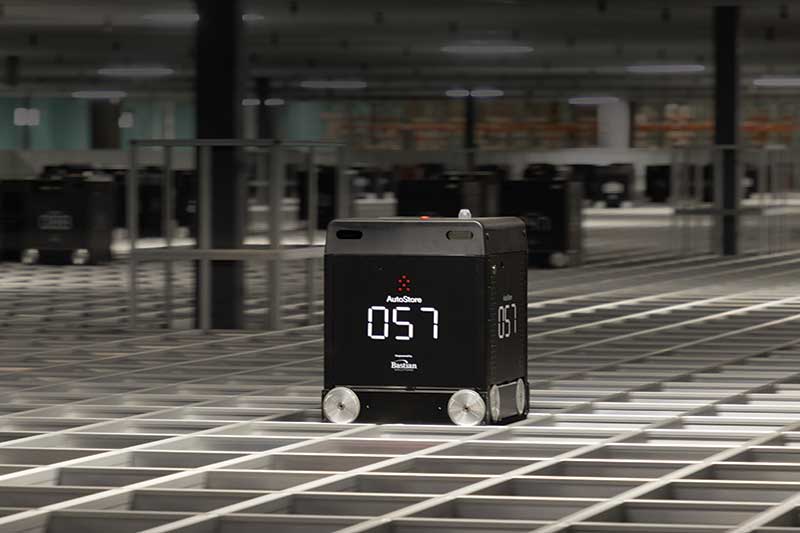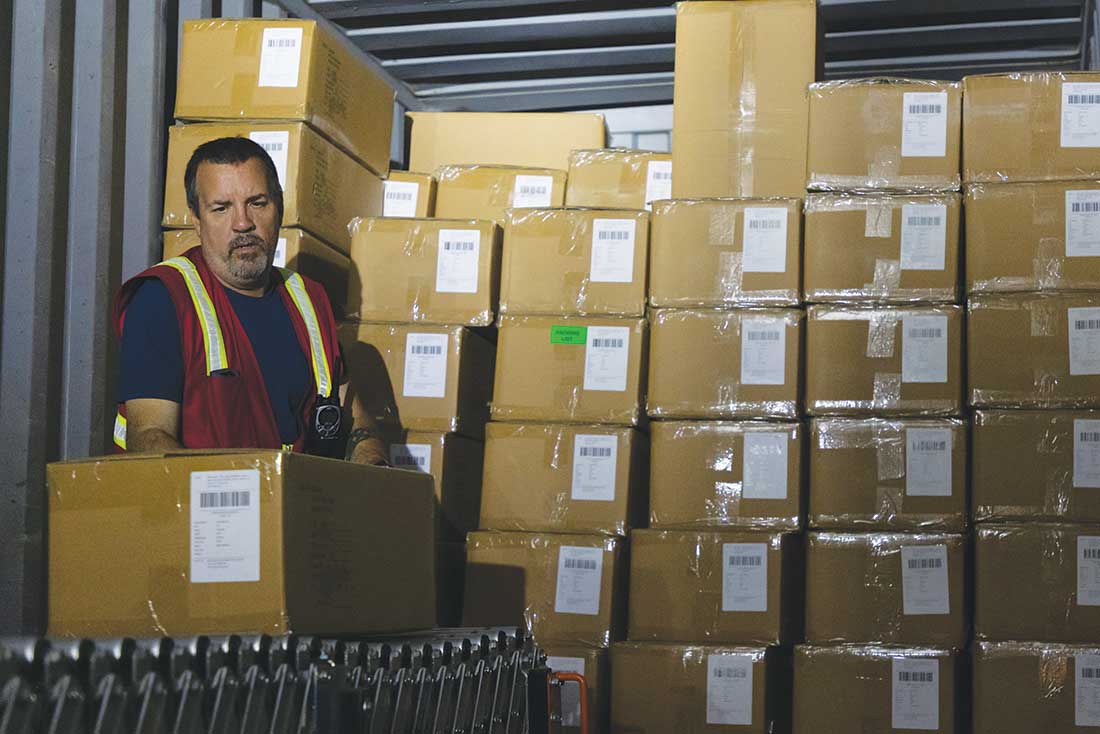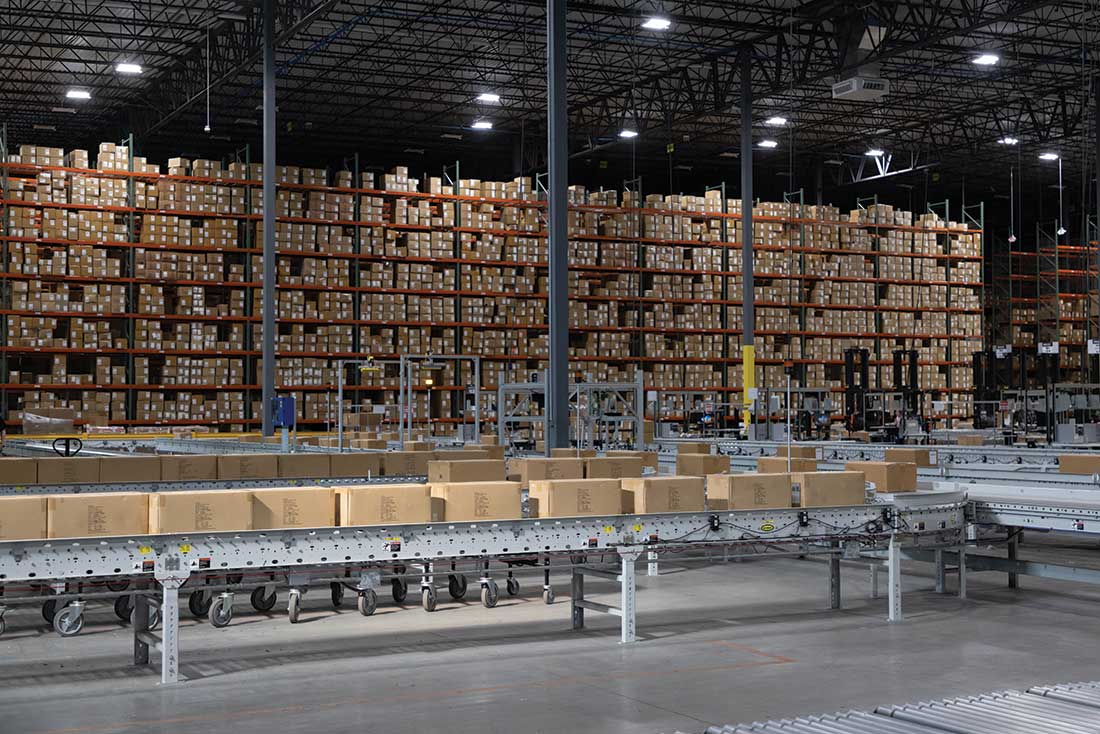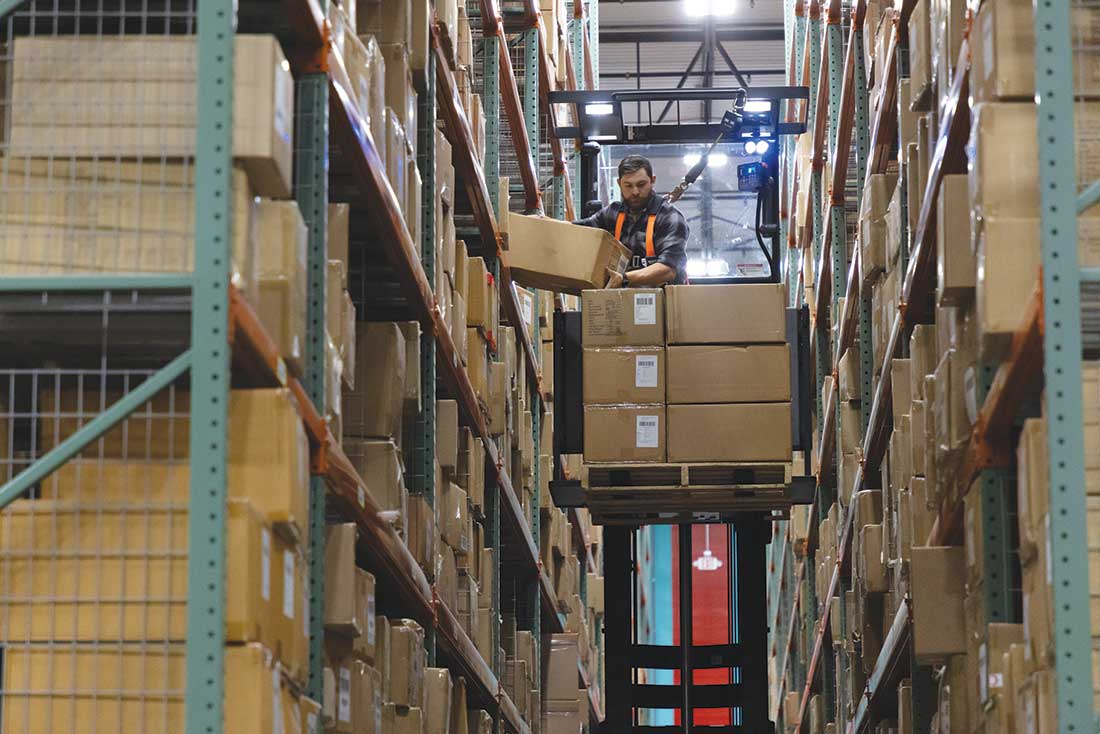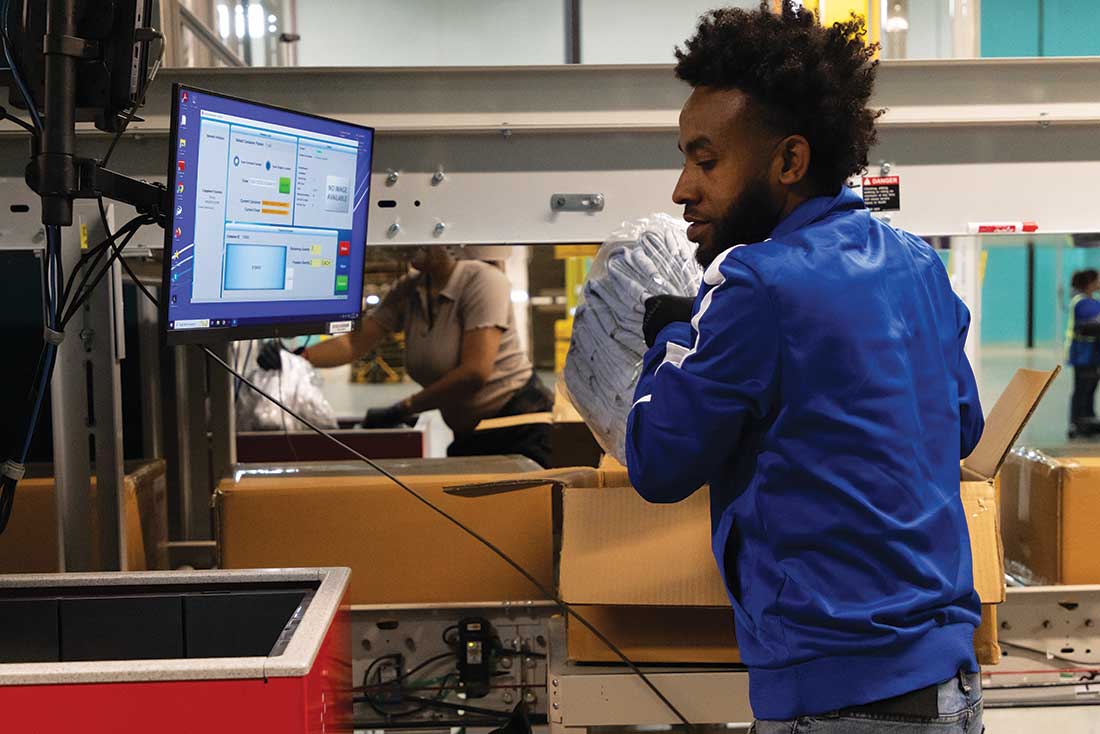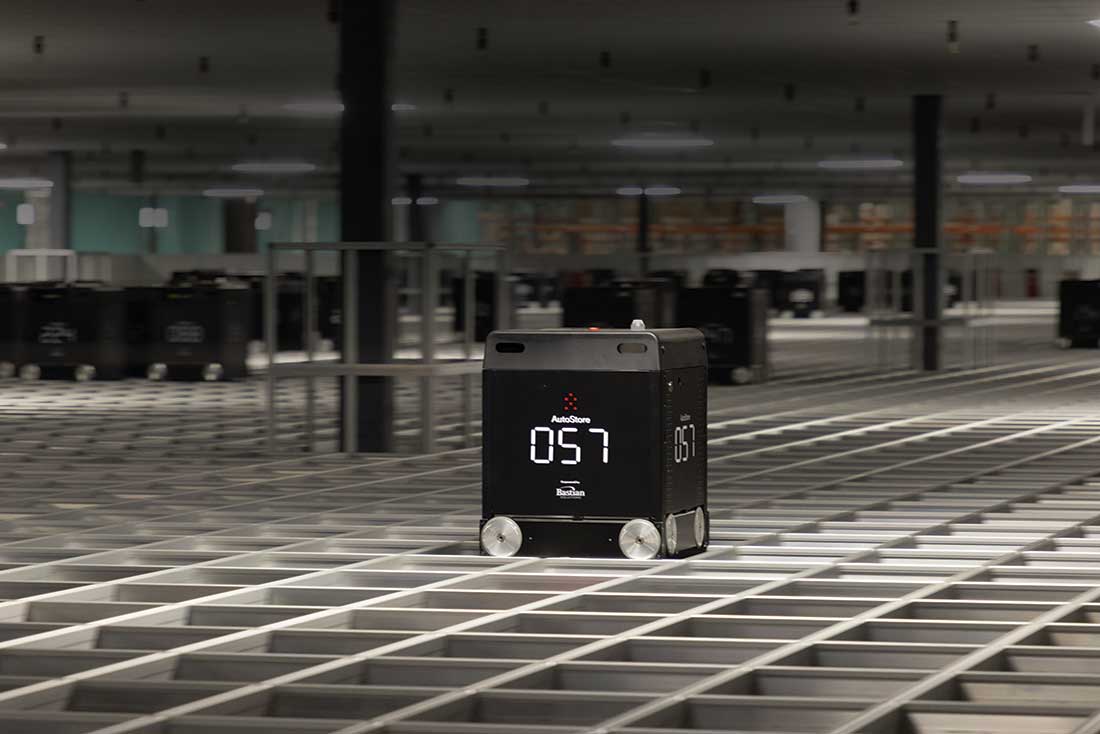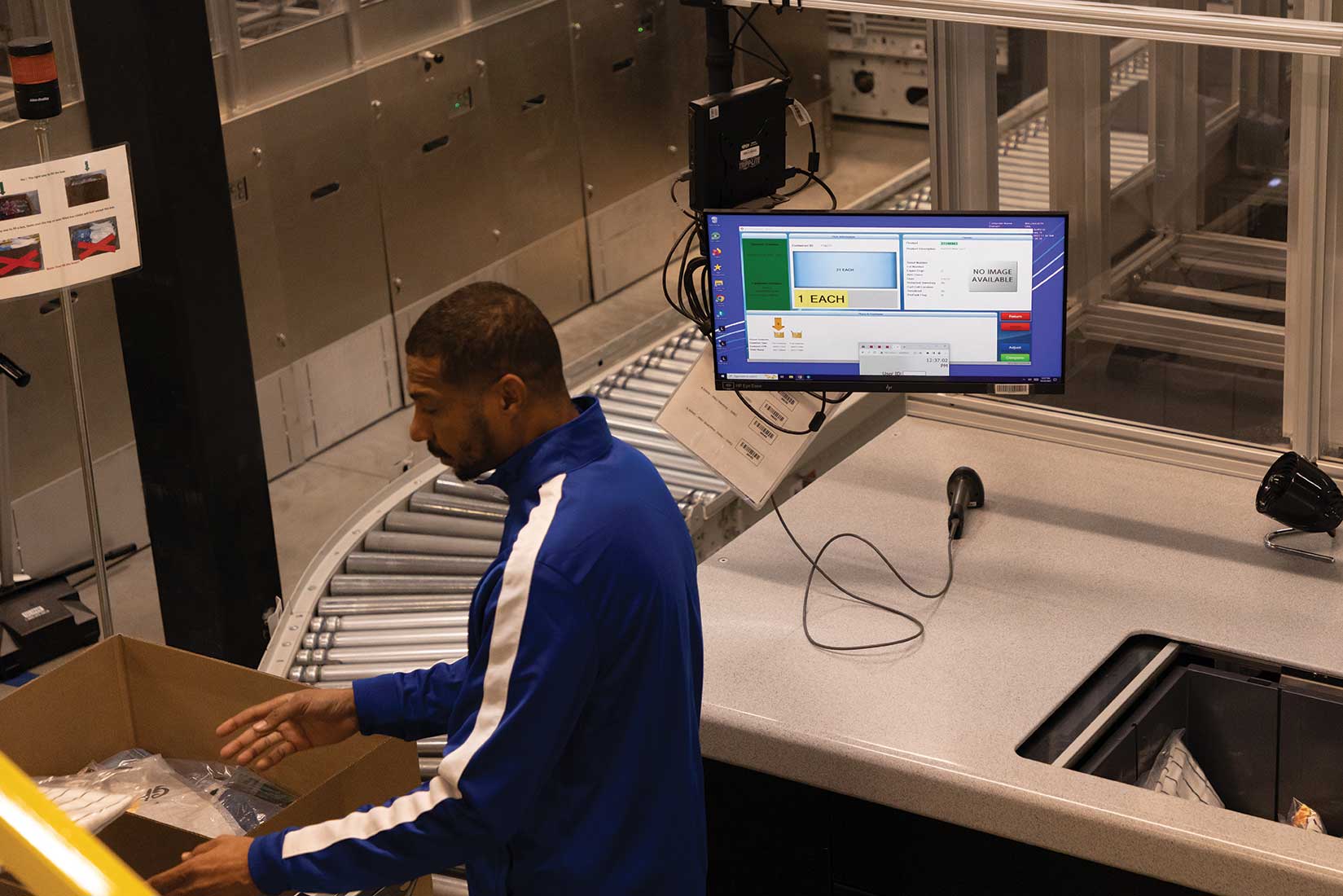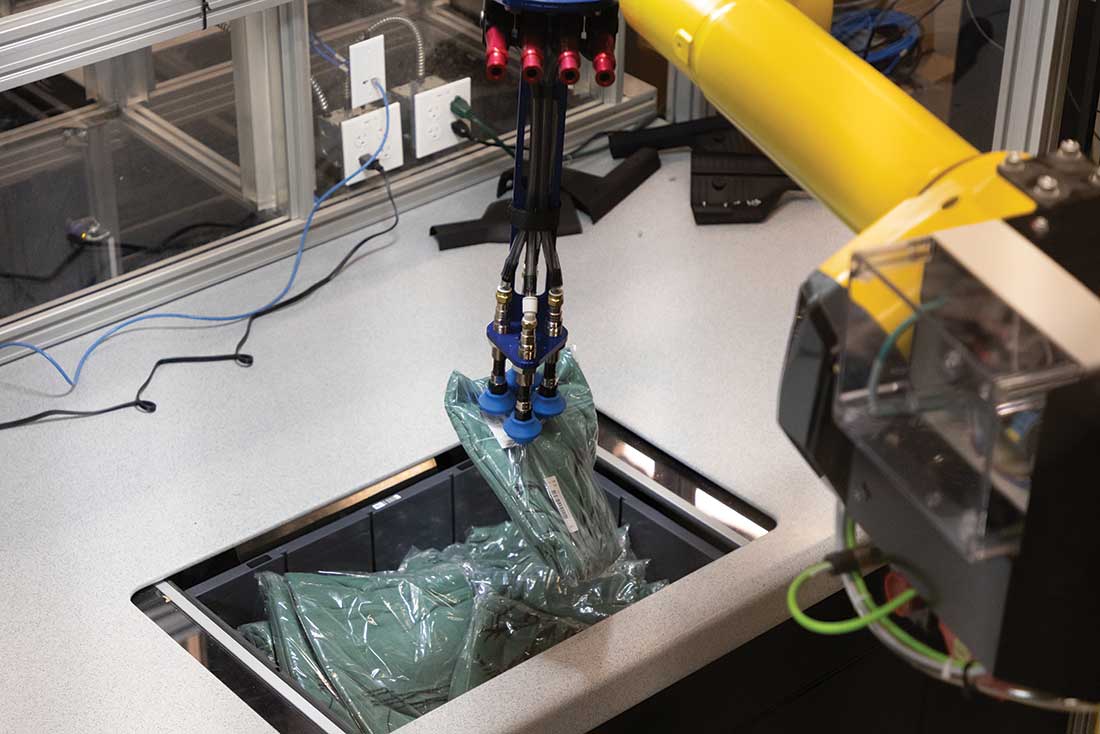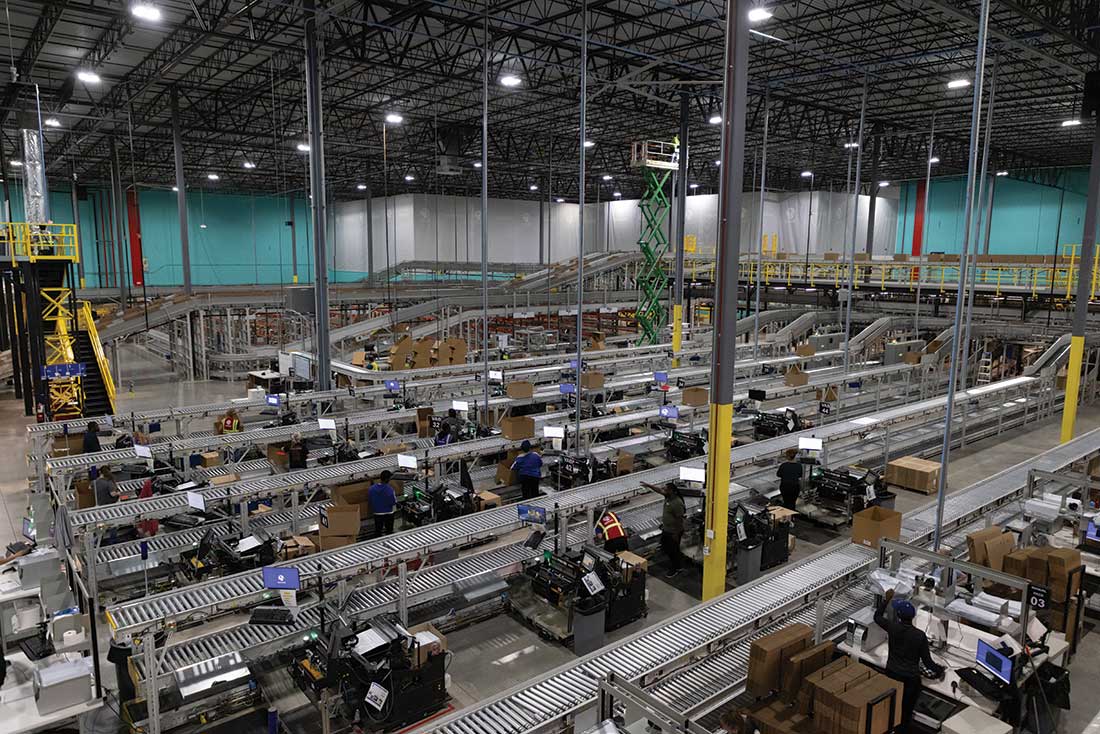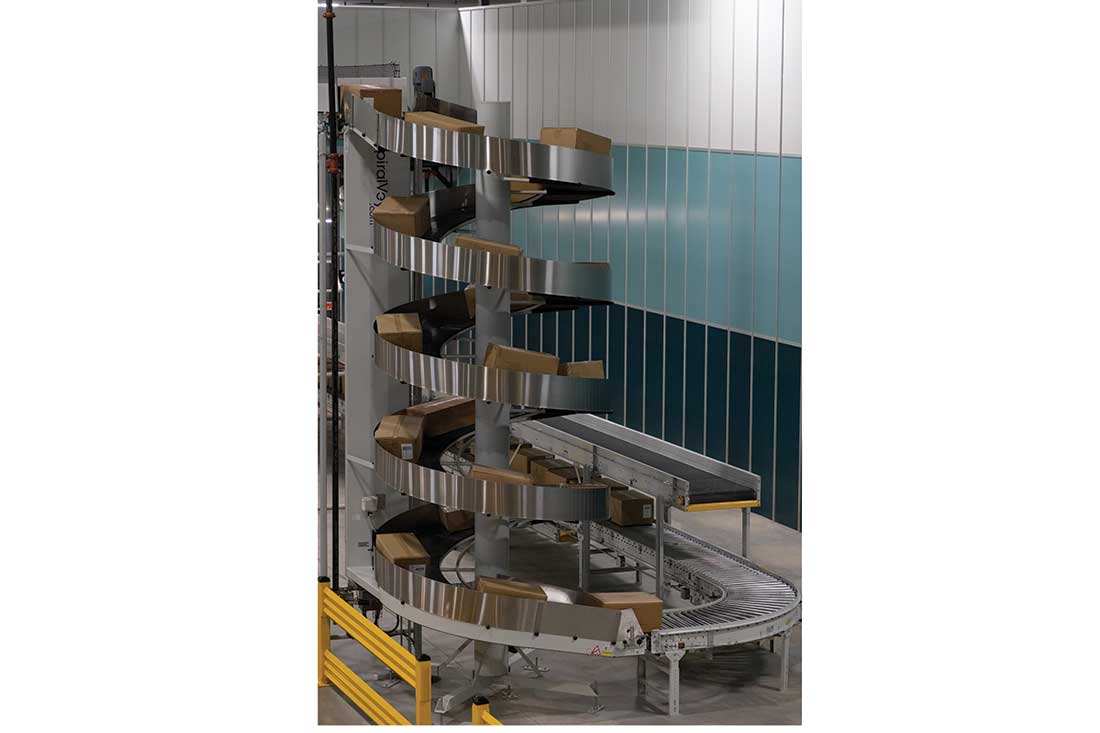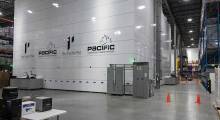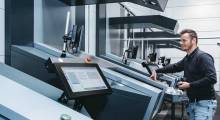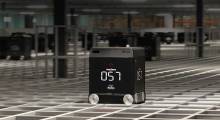What will the e-commerce distribution center of the future look like? And which of the tools in the automation toolkit might come together to minimize touches as product flows through a building, all while making the best and most productive use of the human component of those operations?
Warehouse operators are asking those questions every day as they design new systems and as new solutions are introduced into the market. One potential answer is a 400,000-square-foot, e-fulfillment facility near Columbus, Ohio, operated by GEODIS, a global third-party logistics (3PL) provider that has been a leader in the adoption of new automation technologies. Modern first published an article about GEODIS’s adoption of autonomous mobile robots (AMRs) in the February 2019 issue.
The new facility for specialty retailer Maurices (designed by GEODIS’s internal team and Bastian Solutions), is an omnichannel building that fulfills direct-to-consumer orders; store replenishment; and buy online/ship-to-store from a single inventory with minimum touches. In retail fulfillment operations, most inventory is touched only once from the time an order drops until it goes out the door.
Looked at from dock to dock, inventory is touched approximately eight times from receiving to shipping for e-commerce orders or mixed-SKU orders going to a store; five times for a full case that is retrieved from reserve storage for store replenishment; and twice for crossdocked cases from receiving to shipping.
Flexibility was a key element of the design, notes Drew Bailey, GEODIS’s vice president of design engineering for the Americas region. “One of the things we were trying to solve for was what I’ll call a channel-agnostic facility,” Bailey says. “In the event that future growth plans change from the forecast, Maurices wanted a solution that was flexible enough to adapt to those changes. Everything we put in—the robots, order picking ports, totes and grid—can be expanded in the future without a major construction project.”
At the heart of the facility is the latest iteration of AutoStore. Some call this “the black bots,” which are more efficient than the more familiar red bots, and they serve as the fulfillment engine for almost all SKUs except those that are too bulky or fragile to be handled by automation, such as perfume or oversized items like coats. The facility went live with 320 bots, with plans to expand to 400.
The system has 34 AutoStore RelayPorts for picking. Of those, 29 are currently configured for associates who pick from the donor totes to shipping trays; five are configured for piece-picking robots. “We’re starting with five robotic ports, but all could be converted to robots in the future,” Bailey says.
Packing is also automated. Retail orders are automatically right sized and sealed for delivery, while e-commerce orders go through autobaggers for single- and multi-item orders. As with picking, they have a small manual area for items that can’t be handled by automation.
Finally, cartons are automatically dimensioned upon receipt and in some cases automatically labeled for shipping. “We try to be early adopters and push the envelope where it makes sense to secure new relationships,” Bailey says. “Ultimately, technology helps us do that.”
Taking a risk on automation
With headquarters in Paris, GEODIS is one of the largest 3PLs in the world, generating nearly $15 billion USD in revenue across its global operations in 2022. The company services 82,000 customers, with more than 49,400 employees across a global network that reaches nearly 170 countries and approximately 80 million square feet of warehouse space. It moves more than 100 million parcels a year through its Distribution and Express business alone. In the United States, GEODIS operates more than 230 sites, representing over 50 million square feet of warehousing space. It serves a variety of verticals, including retail and e-commerce fulfillment, high tech, fast-moving consumer goods, health care, industrial and automotive.
And, as with other 3PL providers, GEODIS is adopting technology to take its operations into the future. “We pride ourselves on taking a healthy amount of risk to be better than we are today,” says Bailey. “That’s the conversation we’re having internally, and we try to find innovative robotics companies to go on this journey with us.”
As to customers, he adds, in a single tenant building like the one GEODIS is operating for Maurices, the 3PL has to align its tolerance for risk with the customer’s. “It’s a balance, and one that we have to be well aligned on.”
As with other 3PL providers, automation at GEODIS is driven by trends familiar to anyone operating a distribution center. One is the rise in e-commerce orders, but also the need “to adapt to the market that’s imposed on our clients,” Bailey says. “In click-to-ship, everyone is trying to compete with a delivery timeline that’s been set by Amazon.” The other is the combination of labor shortages coupled with wage increases; while those have begun to moderate in recent months, they’re still a factor in logistics hubs where distribution centers are huddled together.
Back in 2017, GEODIS concluded conventional warehousing was no longer sustainable. That spring, GEODIS created an innovation team to investigate new technologies. Important criteria included: the capital investment required; its user friendliness and ease to operate; its scalability and mobility (if necessary, how easily could GEODIS move a solution from one facility to another?).
Since then, the 3PL has implemented multiple types of robots, including autonomous mobile robots, piece-picking robots and goods-to-person solutions like the one installed in Ohio, as well as systems from Exotec.
Bailey says the solutions coming to market today, like AutoStore and Exotec, represent a major step forward in the evolution of warehouse technology. “When I was new in the industry, the only options of this kind were Kiva and AutoStore, and AutoStore was just getting started,” he recalls. “That meant most people were looking at shuttles. They were major construction projects that also required significant training for operators and maintenance.” In contrast, many of today’s solutions “can be stood up faster and don’t require a lot of customization,” Bailey says. “They can scale later without major construction.”
Designing the omnichannel DC
Planning for the Maurices facility began about three years ago, when GEODIS responded to a competitive RFP to create an omnichannel distribution center capable of filling e-commerce orders, handling store replenishment and filling online/ship-from-store orders from a single pool of inventory. At the time, the retailer, which had once been part of an apparel group with a distribution network, had been acquired by a private equity investor and was looking to develop its own fulfillment capabilities.
GEODIS set out to accomplish several goals with its design proposal. One was to create a fulfillment solution that was “channel agnostic.” When a donor tote is presented to an order selector or a robot, the picking process is the same regardless of whether the order is for e-commerce or store replenishment. The items are picked to a tray or into a shipping container that will be sorted to the right packing area for the order type. Essentially, a pick is a pick.
The second was flexibility and adaptability should the company’s future growth vary from its forecasted growth. “If e-commerce grows less than projected, or if retail grows more than projected, they wanted the system to adapt with minimal changes,” Bailey says. “With this design, the forecast can be off by a significant amount, and it won’t matter from a technology perspective.” He adds that GEODIS could’ve designed a system that was better for e-commerce or better for retail, but this was a comprise to handle both channels.
Last was to design the system in a way that allowed the client to make critical investments now while deferring other investments into the future. “We built the grid for the AutoStore system to a future design because that’s the most intrusive part to the business if we have to expand,” Bailey says. “The robots, ports, totes and packaging equipment can be expanded without a major construction project.” As the number of bots expands, they’re simply added to the grid.
Bailey adds that the ability to expand the system in the future with comparatively little disruption was one of the reasons for going with the AutoStore solution. “We initially thought we would install a shuttle system due to the relatively high throughput required, but the ability to defer expense was an important factor in this solution,” Bailey recalls.
The black bots offered several advantages over the usual red bots. At a high level, Bailey says they’re more efficient because they can operate in a tighter pattern on the grid and exchange batteries versus being out of service while sitting on a charger. And, at the time of the design, the black bots could handle larger or taller totes.
“We were able to work with Maurices’ suppliers to ship product from the point of origin in cartons that are the same size as the AutoStore bins,” Bailey says. “When we do induction into the system, we empty one carton into one bin and it’s fully utilized, which speeds up the decant time.”
Another unique feature is that the target containers, or the order containers, are part of the system and are conveyed in automatically rather than sitting outside of the system. AutoStore’s most efficient port, the RelayPort, supports a faster picking process by decreasing the bin transition time, or the time from when an order selector picks from one bin until the next bin is available for picking.
Another important feature was the inclusion of five piece-picking robotic ports among the 34 picking ports. Bailey acknowledges it was an aggressive strategy at the time of the initial design, but it was also encouraged by the customer. “Robotics allows us to redirect and optimize the use of labor elsewhere in the facility for tasks that are less tedious and repetitive and ultimately better suited to people,” he says.
They started with five because at present volumes, they can keep five robots working at a steady pace. “Robots are expensive, and you don’t want the asset to be idle,” Bailey says. At present, robots are most efficient picking orders that are a single unit per line; in this facility, they will handle about 80% of the e-commerce volume on an average day. Associates are picking other orders, such as retail volume and product that isn’t pickable with robotics.
Removing touches
The facility was designed to minimize touches from receipt until shipment. When it came to the order fulfillment engine, the goal for retail orders was “one touch for outbound,” which was achieved. Trays that will be delivered to the packaging system are automatically erected and presented to an order selector along with the donor bin.
Once all of the items for that shipping container have been picked, it is conveyed to the packaging system, which right sizes the box to eliminate any unnecessary void, folds the flaps and then glues the lid to close the container. It’s then sorted to shipping.
Another key component was working with the customer to eliminate packing slips. While that process can be automated, it removes another step from the overall process.
E-commerce orders require an additional touch at packing, where multi-line orders are dropped into autobaggers and single unit orders are inducted on a belt to go through a horizontal style autobagger.
Finally, another essential element to the design was the creation of a process to handle buy-online/ship-to-store orders. The advantage to the retailer is the savings on shipping costs plus the ability to get the customer into the store, where they may make an additional purchase. These orders are consolidated into a master carton, or cartons, for individual stores. If the store only has one order that day, it will be shipped like any other e-commerce order. If it has multiple orders, they’re staged in a master carton until the end of the day. Then it will be shipped with other orders to that store.
“We’re really proud of what we’ve accomplished with this system,” Bailey says. “It’s world class, and in my view, is one of the best show pieces for this technology that I’ve seen anywhere in the world.”
Article topics
